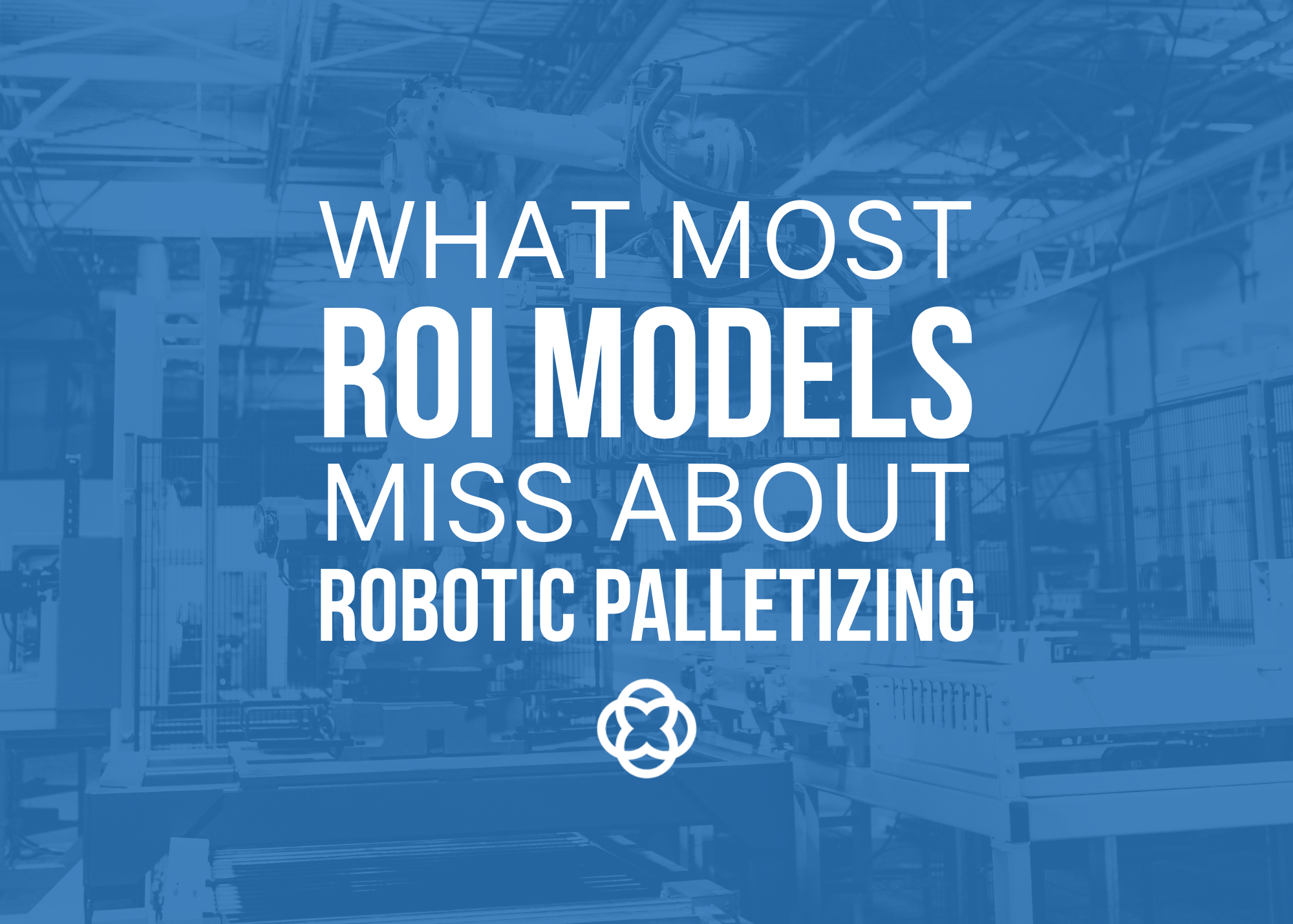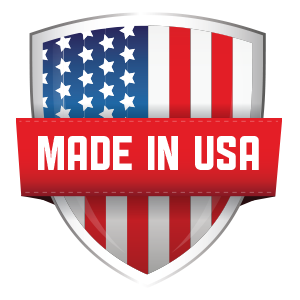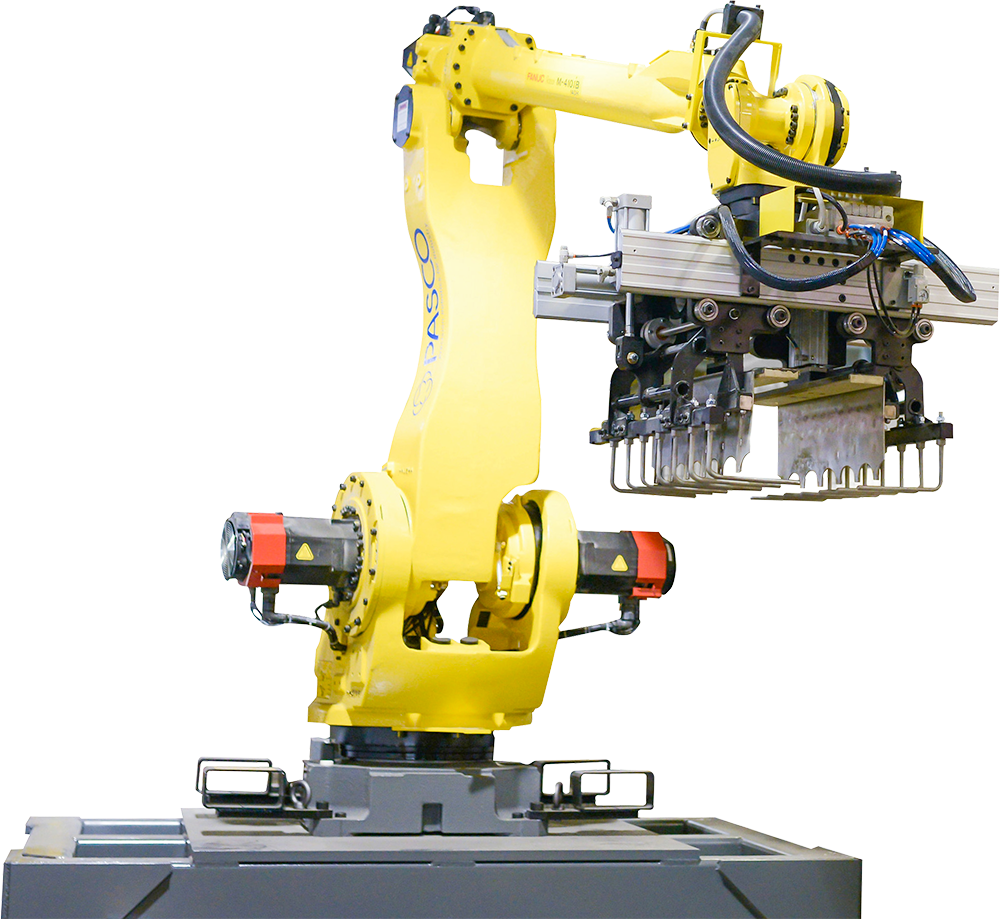Most ROI models for robotic palletizing reduce the system to a headcount calculation.
How many positions can we eliminate from the palletizing line?
What do those positions cost per hour?
How long will it take to recover the cost of our machinery investment?
That calculation gets the conversation started, but it capture the full breadth of cost reductions as result of automation. It leaves out the upstream equipment idling while pallets back up. It ignores the cost of inconsistent stacking that slows down warehousing. It assumes labor is a static problem instead of a volatile one.
Calculate the cost of inefficient operations
Most ROI models miss 50–60% of automation benefits. Our calculator includes throughput gains, injury costs and system-wide impacts. Try it below.
Try the ROI CalculatorManual palletizing creates hidden production losses
If your palletizing cell is still manual, you already know the challenges even without running numbers. Labor for end-of-line roles is difficult to recruit and retain, physically demanding and generates your facility’s highest injury rates.
These positions cost more and create output variation shift to shift, week to week. That inconsistency reverberates upstream: fillers stop, conveyors backup, production timing gets disrupted. Most teams don’t realize how much production time they lose at the end of the line because it shows up as missed opportunity, not as hard downtime.
When a robotic system replaces manual palletizing, upstream equipment can finally run at its designed rate without constantly adjusting for human bottlenecks. We’ve seen throughput increases of up to 50% from palletizing automation alone with no upstream changes whatsoever.
This shows up clearly when you track designed rate versus actual rate on upstream equipment or measure how many minutes per hour your line slows due to pallet congestion.
Robotic palletizing systems deliver consistent high-speed performance
Manual crews might hit 15 bags per minute for an hour, then drop to 8 when they get tired, take breaks or lose focus. Robots hit 20+ bags per minute for the entire shift, every shift. They deliver the same stack quality and throughput at 2AM on a Friday as they do at 8AM on a Monday.
That consistent high performance eliminates overhead everywhere else: safety stock, warehouse labor, overtime, missed shipments, frustrated supervisors. Plants see this in their shift-to-shift data: pallet count, quality and staging time all stabilize, reducing warehouse rework and QA stops.
Manual palletizing is rarely the most expensive part of the line, but it is often the least predictable.
Complete ROI models include system-wide impact
Manual palletizing costs extend far beyond wages. Costs also lie in the stack that shifted during transport, the mixed-case SKU that backed up the entire line and the third shift you had to call in because you fell behind during the second.
When evaluating robotic palletizing, it’s important to consider direct labor costs alongside injury rates, insurance premiums, wasted warehouse labor, time lost to rework and upstream automation performance. Most of that never appears in equipment quotes. But it always shows up in the operation.
If robotic palletizing improves line stability by 20% and saves two full-time positions but also eliminates the need for third-shift overtime and reduces warehouse rework by 30%, you’re not just looking at ROI anymore. You’re looking at capacity recovery.
Assessing the cost of inefficient and manual operations
If your ROI model only includes labor, it’s going to undervalue robotic palletizing. Our calculator includes injury data, turnover costs and upstream throughput impact because real production doesn’t run on spreadsheets. Try it below to run your own numbers.
The value of robotic palletizing eliminates the chaos that keeps plants reactive, from upstream delays to warehouse confusion to supervisor overtime. If your ROI model can’t account for that, it’s not a bad model, it’s just incomplete.
Ready to assess what robotic palletizing can do for your operations?
Share your production data with our applications engineering team. We’ll help you identify the hidden costs in your current operation and model the complete system-wide benefits of automation.



